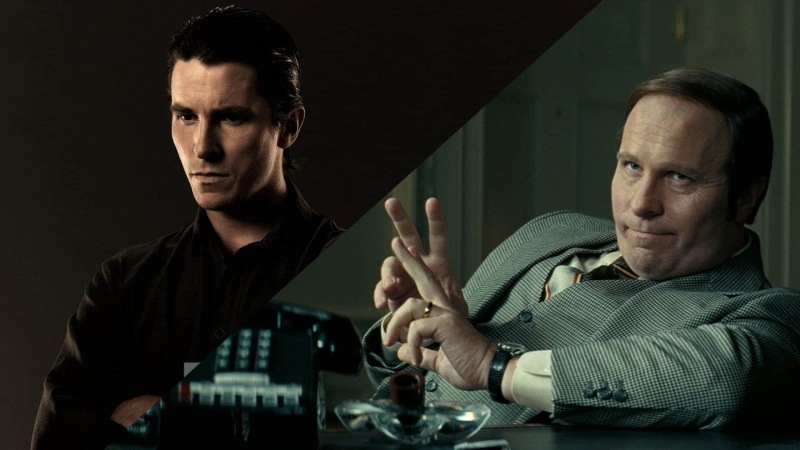Beginner’s Guide to Acting for Camera: Techniques That Work
Acting for the camera or screen acting requires actors to go beyond their craft and get acquainted with the technical aspects as well.
From understanding camera and framing, perfecting dialogues and body language, and immersing themself into the character to regular practice, experimentation, and trying out new things, it is a versatile art form that requires analytical and performance skills.
Read ahead for a beginner’s guide to acting for the camera and discover proven techniques to stand out with confidence.
Stage vs. Screen Acting – Differences Every Beginner Must Know
Stage acting is a performing art in which actors perform live in a theater. Screen acting, on the other hand, includes shooting scenes for screen-based media like movies, TV shows, and Web series.
Do you want free career counseling?
Ignite Your Ambitions- Seize the Opportunity for a Free Career Counseling Session.
- 30+ Years in Education
- 250+ Faculties
- 30K+ Alumni Network
- 10th in World Ranking
- 1000+ Celebrity
- 120+ Countries Students Enrolled
The following table highlights the key differences between stage acting and screen acting that a beginner must know.
| Parameters | Stage Acting | Screen Acting |
| Scale | Stage acting is characterised by amplified emotions and expressions, and exaggerated body language to present a larger-than-life performance. | Actors avoid amplified dialogue delivery and body language while acting for the camera. The subtle, understated delivery makes it relatable and appeals to the audience. The elaborate sets, use of CGI, and edits in post-production aid the performance, reducing the need for exaggeration. |
| Focus | Actors work with set and costume designers and directors to get through to the audience. The emphasis is on dialogues and non-verbal acting to entertain a live audience. | The emphasis is on acting and presenting subtle emotions that cameras can zoom into, as well as on posture and body language that complement the subtlety. |
| Technicalities | Since stage acting doesn’t permit scene-by-scene takes, actors rely on memorizing sequences and dialogues to coordinate with the team and deliver continuous and consistent performances. | Actors focus on the technical aspects of acting in front of the camera, understanding frames, eyeline, camera angles, and interacting with the real or green-screen surroundings. |
| Connection With Viewers | The actors can feel the audience react and respond as they perform, creating a deep emotional connection between them and the viewers. | There is no immediate connection with the viewers, and the actors have to wait until the film or series is released to understand the response. |
| Scope of Improvisation | There is very little scope for improvisation, except for specifically designed improv acts. | Depending on the script and story, the actors get considerable scope to improvise, reshoot scenes, and fix errors. |
| Retakes | There is no scope for retakes as the performance is live. | With screen acting, there is more room for trial and error and finding out the perfect way to enact a scene, while retakes permit rectifying errors in post-production. |
| Rehearsals | Actors take months to rehearse each scene and sequence to perfect it. Stage performance also includes rehearsing with costumes and final sets, and props to ensure smooth delivery and effortless presentation. | The scope of rehearsals varies from one format to another, with some accommodating months of practice. |
How to Master Acting For Camera?
1. Understand Your Frame
The first and most important rule while being in front of the camera is to understand how your performance will appear on different frames.
Even as a beginner, you need to know how your body language and movement will look on a wide-angle shot, or how your eyes and facial expressions will be emphasized in zoom and close-up shots.
Book Now →
2. Know Your Eyeline Well
Make sure you have a fixed eyeline even when you don’t have another actor present, and are using green screen and practical effects.
Read Also: Top 15 Acting Audition Tips Every Aspirant Should Know
Consistent eyelines help the audience engage better and make the performance look authentic.
Do you want free career counseling?
Ignite Your Ambitions- Seize the Opportunity for a Free Career Counseling Session.3. Subtlety is Everything
From Fleabag’s fourth wall-breaking expressions aimed at the camera to a warm smile from Ishaan Awasthi’s bench partner in Taare Zameen Par, subtlety adds life to characters.
Subtle acting and emphasis on the nuances of a character make the acting appear more convincing and relatable. Avoid exaggerated movements and over-dramatic dialogue delivery to hold the viewer’s attention.
Focus on eye movements, facial expressions, subtle gestures, and adapting to the character’s personality traits to ensure a memorable and impactful performance.
4. Focus on Continuity
Screen actors often have to shoot scenes out of order. Focusing on continuity enhances acting and makes it look professional. It is especially important for retakes and single scenes shot over multiple days.
Maintaining continuity on camera starts with consistent body language, movement, and spatial awareness. Always stay mindful to deliver impactful performances.
5. Prioritize Emotional Connection
The prime goal of an actor is to make an emotional connection with the characters they are playing, so the viewers can empathize and resonate with their arcs.
Research extensively to understand your character’s perspective and backstory, and analyze their actions.
Important Screen Acting Techniques That Actually Work
1. Always Work On Vocal Techniques
Vocal techniques and exercises help with adding texture to your voice, enunciating where required, clearer pronunciation, and prepare you for your performance by enhancing vocal control.
Here are some vocal exercises and techniques you can use to improve your acting
- Breathing exercises, including diaphragmatic breathing
- Warming up your voice
- Humming, yawning, and sighing
- Practicing tongue twisters
- Vocal fry
2. Emphasize Body Language and Expressions
Consider the “Damaadji” (son-in-law) from the web series ‘Panchayat’, who, despite very little screen time, has become one of the most popular and memorable characters by mixing effective dialogues and on-point expressions.
Read Also: CGI vs Practical Effects: Pros, Cons & Best Uses in Film
Since subtlety is the key in screen acting, body language plays an integral role in conveying emotions and making the character appear realistic.
It aids the dialogues and gets the audience on board with an authentic enhancement of character traits by –
- Allowing actors to embody a character and portray their thoughts, perspectives, and feelings.
- Adding uniqueness to the character and setting it apart.
3. Improvisation and Flexibility
Adapting to script changes and experimenting with new roles can boost creativity, opening up new opportunities.
As a beginner, improvising scenes based on prompts can help you –
- React and respond genuinely on set.
- Act more spontaneously, leading to authentic performance that engages the viewers.
- Be confident in your acting skills and try out new things in your career.
4. Method Acting and Emotional Authenticity
Method acting is a popular technique where actors completely immerse themselves in the character’s psyche and their world to understand their physical movements, expressions, thoughts, and motives.
It is a technique used by many veteran actors to showcase emotional authenticity. This involves extensive research, living like the character, wearing the clothes they would wear, or just trying to view the world through their lenses.
As an aspiring actor, method acting can be useful for –
- An authentic and realistic portrayal of a character.
- Analyzing their behavior and perspectives.
- Focusing on internal conflicts, backstories, and emotional arcs that enable a more nuanced performance.
5. Understanding Linguistic Nuances
Actors might have to play characters belonging to different regions, communities, and linguistic groups. These factors heavily influence the way they speak, their accent, and the dialect they use.
Understanding linguistic details involves incorporating these subtle details into their acting.
For instance, think of the dialect and accent used by actor Sayani Gupta in ‘Article 15’, thick with the regional dialect and accented Hindi, in contrast to her role in ‘Axone’, where she skillfully adopted a Nepali accent, ensuring a genuine portrayal.
How to Prepare For A Role While Acting for The Camera?
If you are just starting your career, make sure you have a process for preparing for your roles. This will allow you to stay focused on your goal and effectively bring the makers’ vision to life.
Read Also: CGI in Filmmaking: Evolution, Impact & Future Trends
1. Analyze the Script
Analyzing the script is more than just knowing the story. It means deep diving into the world you are reading about and understanding it like your own.
- Read the script multiple times to get acquainted with the story and its context.
- Go through the character arcs and understand what ties different characters together.
- Have a clear understanding of the story’s purpose and the message it wants to deliver to the audience for a more impactful performance.
2. Understand Your Character
Focus on your character’s journey throughout the script. Ask yourself these questions –
- What is their backstory?
- What are their thoughts and opinions?
- What shaped their personality?
- Why do they act the way they act?
To deliver a genuine and believable performance, fully immerse yourself in the character’s thoughts and emotions, and try to look at the world through their perspective.
3. Rehearse
Getting your lines right without any stutter is the best way to get ahead of the curve. Memorizing lines saves time on set and reinforces your professionalism.
Make sure you know all your dialogues and their sequence. Rehearse them beforehand, focusing on getting the emotion behind them across.
4. Practice Acting in Front of The Camera
Screen actors need to get acquainted with the camera and its various operations. Use your phone camera to practice.
While getting your dialogues right is crucial, understanding how to use your body language and optimize the frame is just as essential for a powerful performance.
Ensuring a consistent eyeline, perfecting facial expressions, and being comfortable with movements improve consistently with regular practice, refining your acting skills.
5. Train For The Scenes That Require Physical Fitness or Transformation
Staying physically fit, exercising daily, following a recommended diet, and regular practice (say, for dance sequences) are central to embracing a character.
Read Also: Scriptwriting 101 – Tips Every Aspiring Writer Should Know
If your script has scenes that require specialized training, make sure you start early. Stories might need actors to get into shape, physically transform to suit the character arc (Like Amir Khan for ‘Dangal’ and Bhumi Pednekar for ‘Dum Laga Ke Haisha’).
Common Mistakes to Avoid As a Screen Actor
1. Overacting
Overacting can make a scene appear inauthentic and unnatural, making the audience feel disconnected.
The key is to maintain a balance by enunciating and being subtle where the script demands.
2. Being Under-Prepared
Being under-prepared can affect your credibility and professionalism on set.
Make sure you know your lines, are well aware of your character’s personality, act without a cue, and sync with your co-actors.
3. Ignoring The Technical Aspects
Actors need to understand the technical aspects of shoots for a well-rounded performance.
Read Also: Evolution of Indian Cinema: Everything You Need to Know
Understand how the camera works and how different lenses influence framing, know about lighting, and make eye contact with other actors as well as the camera.
4. Not Being on Time
Punctuality = Professionalism.
When you value time, your credibility as an actor improves. Being professional and respecting the time frames shows dedication towards the craft and creates a collaborative environment.
5. Flat Delivery
Acting is more than just memorizing and delivering dialogues.
Make sure you use voice modulation techniques, facial expressions, and effective body language to bring depth to your acting.
Conclusion
Mastering acting for the camera needs skill, practice, patience, and the willingness to constantly learn new things. By understanding the craft, learning techniques that work, and avoiding some common mistakes, you can transform your acting dream into a successful career.
Take the first step today and check out the acting courses offered by AAFT, Noida, to get a head start in your journey!

AAFT has been providing the world with limitless creativity and expression since 1993! Through a dynamic and industry-driven curriculum, AAFT provides engaging and captivating articles to persuasive blogs and empowers its readers to explore diverse avenues of creative media education-related content.






